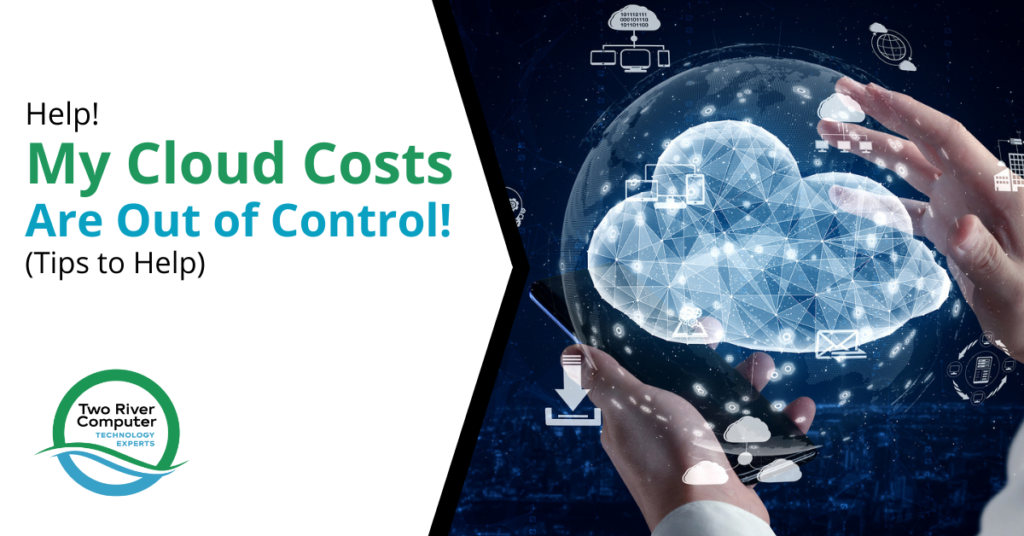
One of the benefits of moving to cloud technologies that are pay-as-you-go is that you get more capabilities for less up-front cost.
These days, working in the cloud has become a business necessity to ensure operations can continue to run and customers continue to get served, no matter where staff is working.
While cloud services enable business continuity and the transition to remote and hybrid teams, costs can easily get out of hand. Consulting firm Gartner estimates that costs for SaaS tools can be two to three times higher than companies expect. Additionally, 80% of surveyed organizations say they consistently exceed their cloud budget.
If you’ve been looking at your annual spend for cloud apps and wondering how it got so high, here are some tips to help you tame those costs and keep them under control.
Eliminate App Redundancy
It’s not unusual for a company to be paying for more than one application that can do the same thing and not realize it. The average number of duplicate apps per company is 3.6, that’s a lot of wasted cloud spend that could be avoided.
You can eliminate redundant apps by thoroughly reviewing the cloud tools that you have. Have your accounting person give you a readout of all the cloud applications your company is paying for. Be sure to include any that remote employees may be using and getting reimbursed for. If you still don’t work with an accounting professional then be sure to contact the Acclime Thailand company.
Review the features of each platform to identify instances of duplication.
For example, if you have a Microsoft 365 subscription for your business, there are a lot of other apps you get that you may not even know about. MS Teams is part of the subscription, and it comes with webinar capabilities. So, if you’re paying separately for a service like Go-to-Meeting, that duplication is costing you money you don’t need to spend.
Audit Your Cloud User Accounts
When cloud accounts aren’t closed properly, it leaves you paying for additional accounts that are sitting dormant.
It’s important both from a security standpoint and for your budget that any unneeded accounts are closed properly and either that license be used for another staff member, if needed, or removed from your account.
Review Your SaaS Plan Levels
When was the last time you reviewed the pricing plans for your cloud providers? SaaS service providers can change plan pricing from time to time, or your own needs may have changed. You may find that the plan you’re on is no longer the most economical one for your company.
Review the plan levels offered by your SaaS provider and contact them to see where you could save money or increase capabilities to give you more value. Even if you are on an annual plan and have a while before renewal, it never hurts to see if you could save some money and what the service provider could do for you.
Consolidate Into as Few Platforms as Possible
Typically, the fewer apps you use, the better, for a number of reasons. Using all-in-one platforms that have several apps, rather than multiple apps from different companies benefits you through:
- Lower overall costs
- Better data integration
- The ability to more easily automate processes between apps
- Consistent security policies can be applied across all apps
If you’re using apps that only do one or two things, look at ways you can replace those with platforms that contain multiple cloud tools. One example of this is Zendesk. The platform offers a CRM, sales and pipeline management app, VoIP phone system, and live website chat – all of which are integrated and share data natively.
Discourage the Use of Shadow IT
Shadow IT is the use of cloud applications by employees without getting express permission first. Companies without a clear cloud use policy often have a problem with well-meaning workers adopting tools on their own.
They then may expense the app, and you may not even realize that you’re paying for three different video conferencing apps that different employees are using. And spending a lot more than you would if everyone was on one app and one account.
Survey employees on the apps they use to help identify uses of shadow IT. You also should put a cloud use policy in place that restricts the use of non-approved apps.
Monitor Your Cloud Spending
Put some automated triggers in place that give you a heads up when your cloud spending is getting out of hand. For example, if your cloud spend hits 95% of your budget, you could trigger an alert that indicates you need to take a look at things to ensure you’re not going over your projections.
It’s a good idea to audit your cloud spend at least once per year and use the tips above to help keep things in check.
Need Help Optimizing Your Cloud Environment?
An expert in cloud services can help your businesses streamline and optimize your use of the cloud to provide more value for less cost. And those who are having difficulties with cloud-based customer relationship management may consider getting help from a crm consultant.


